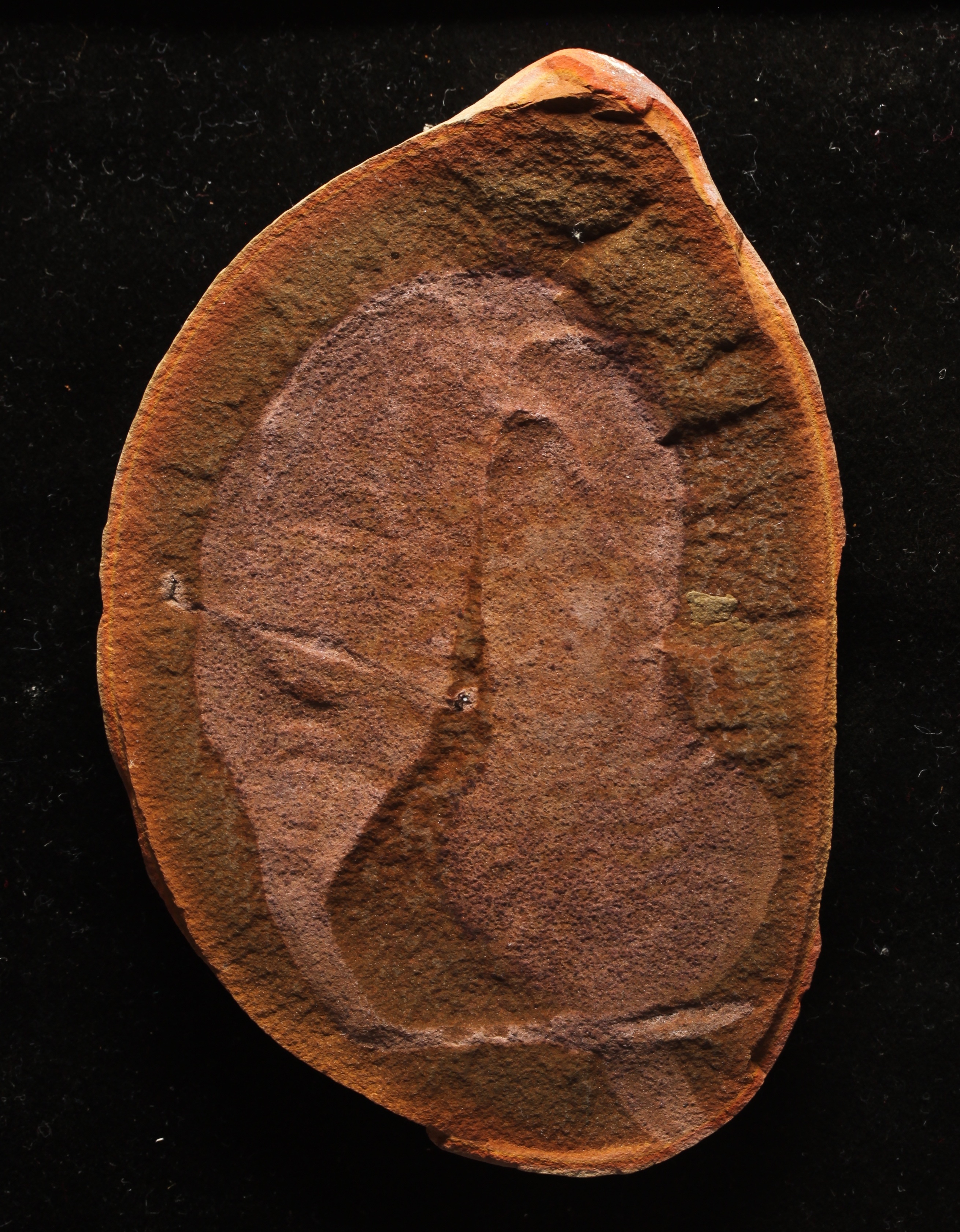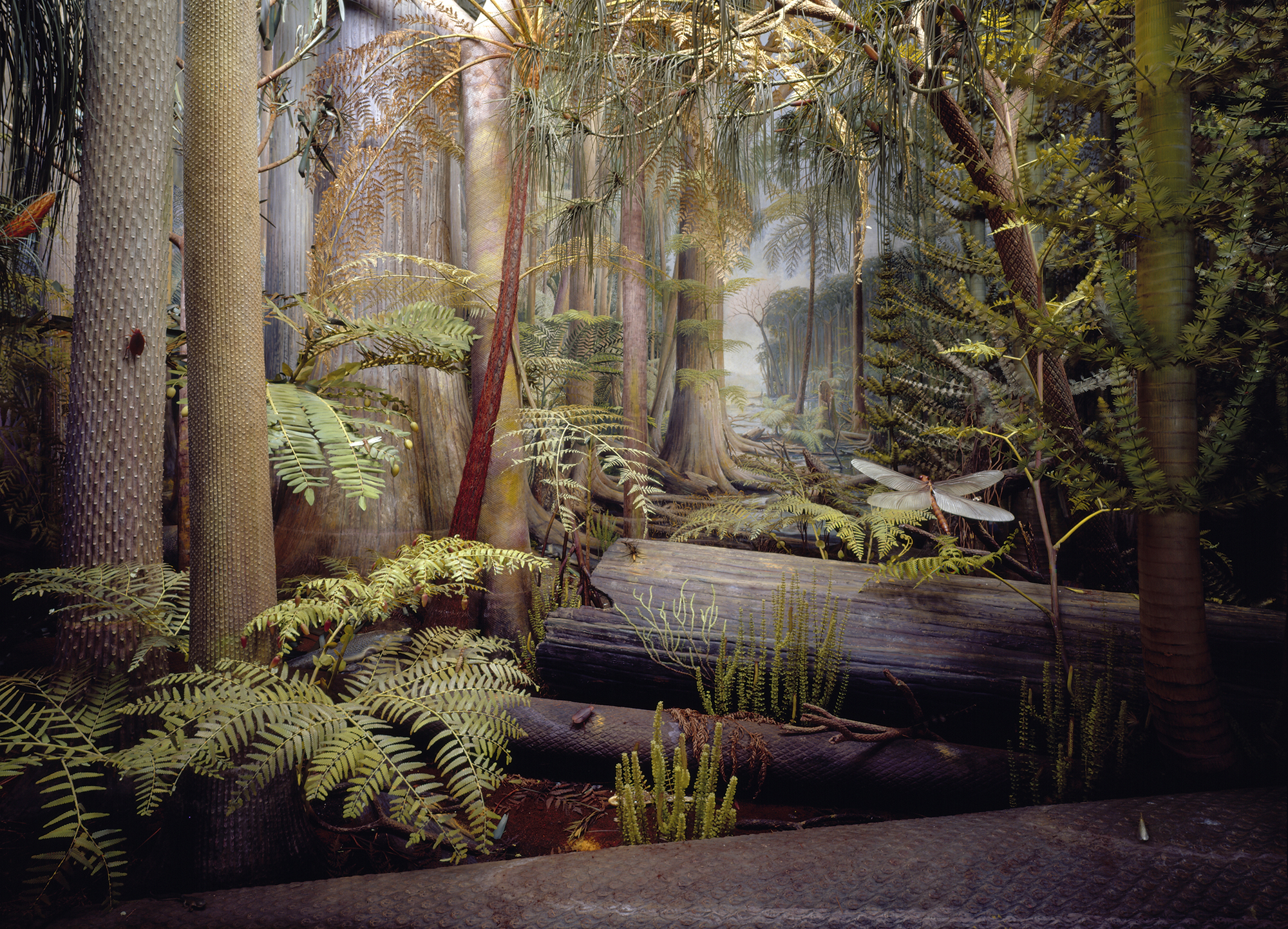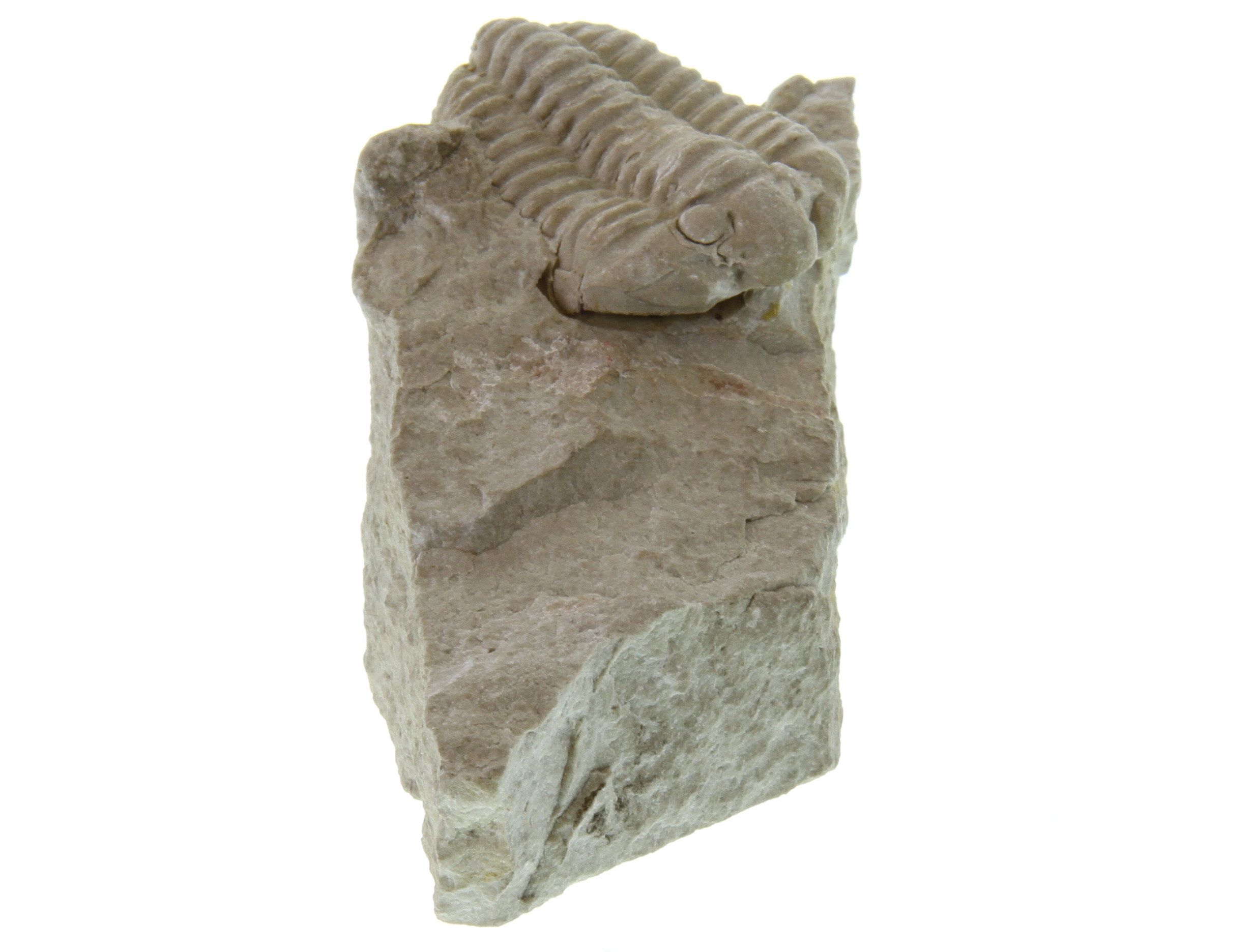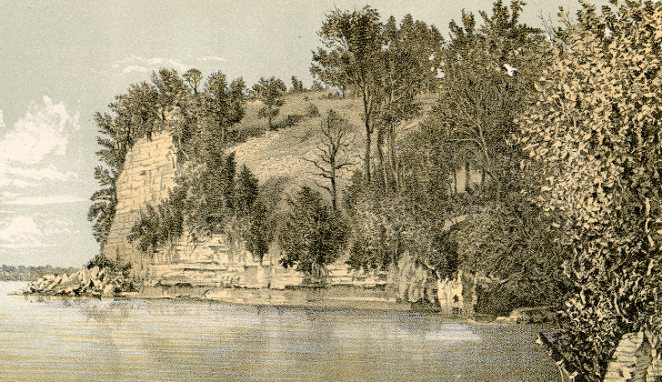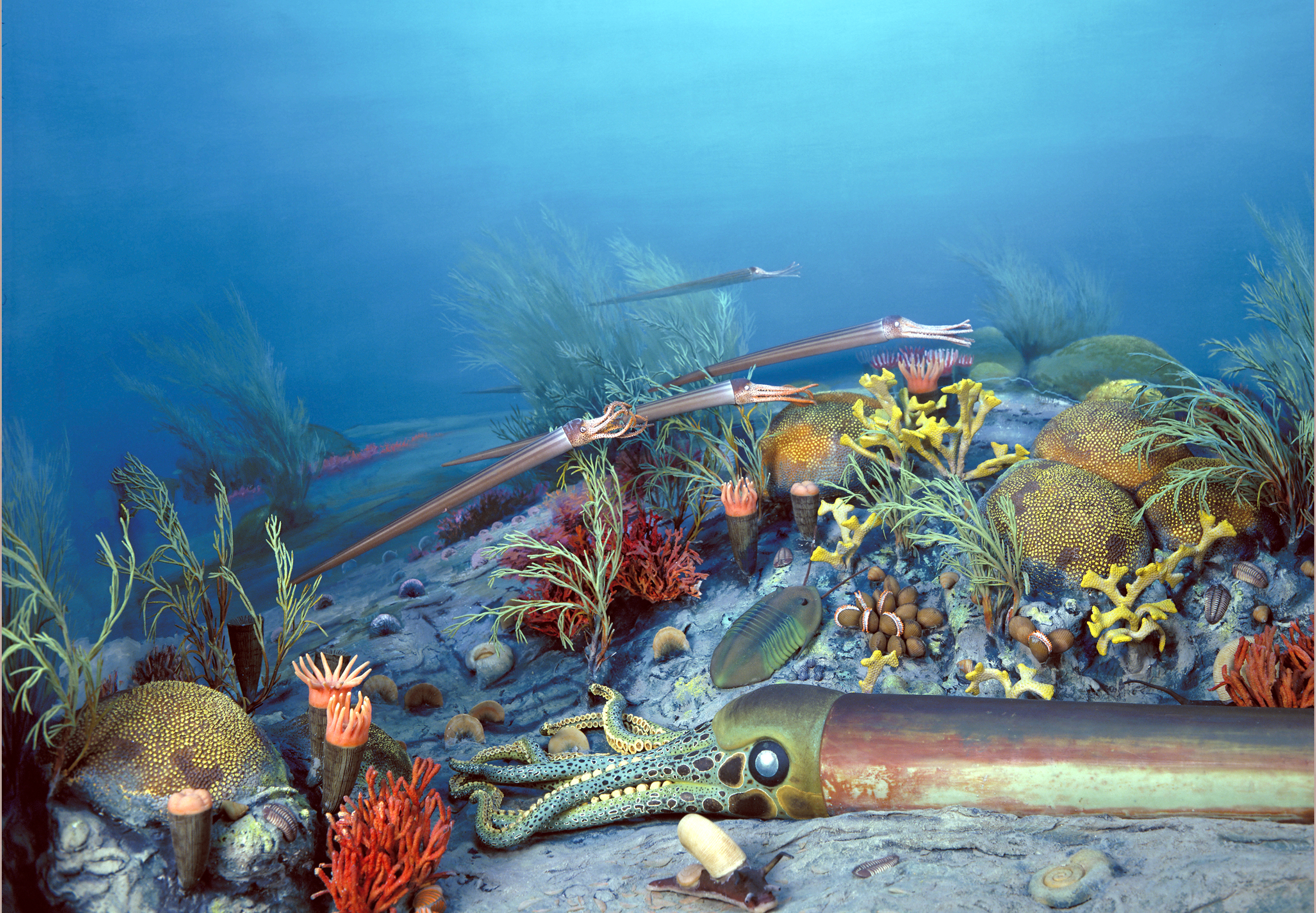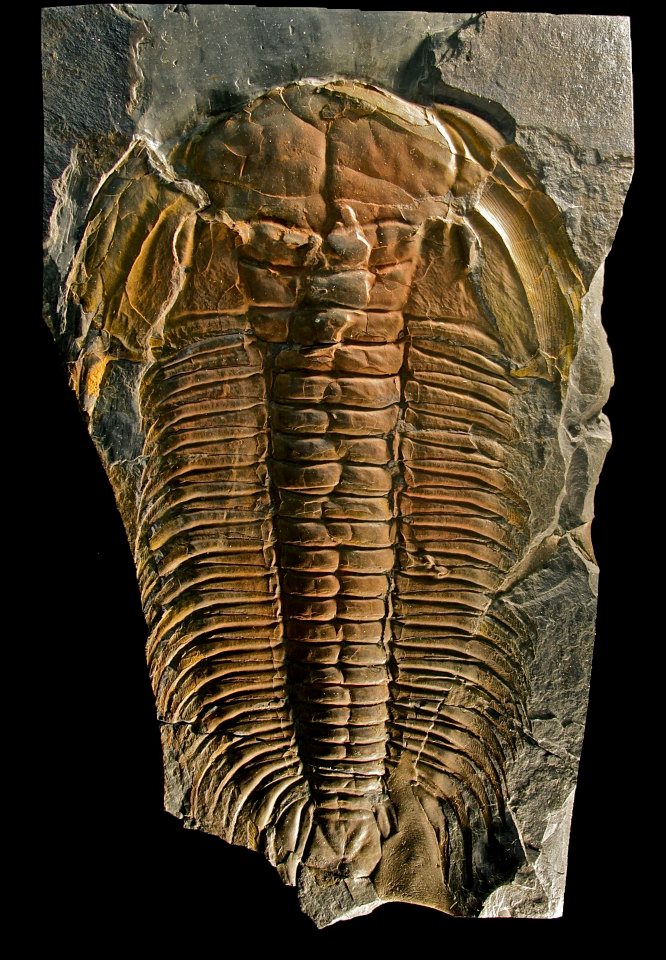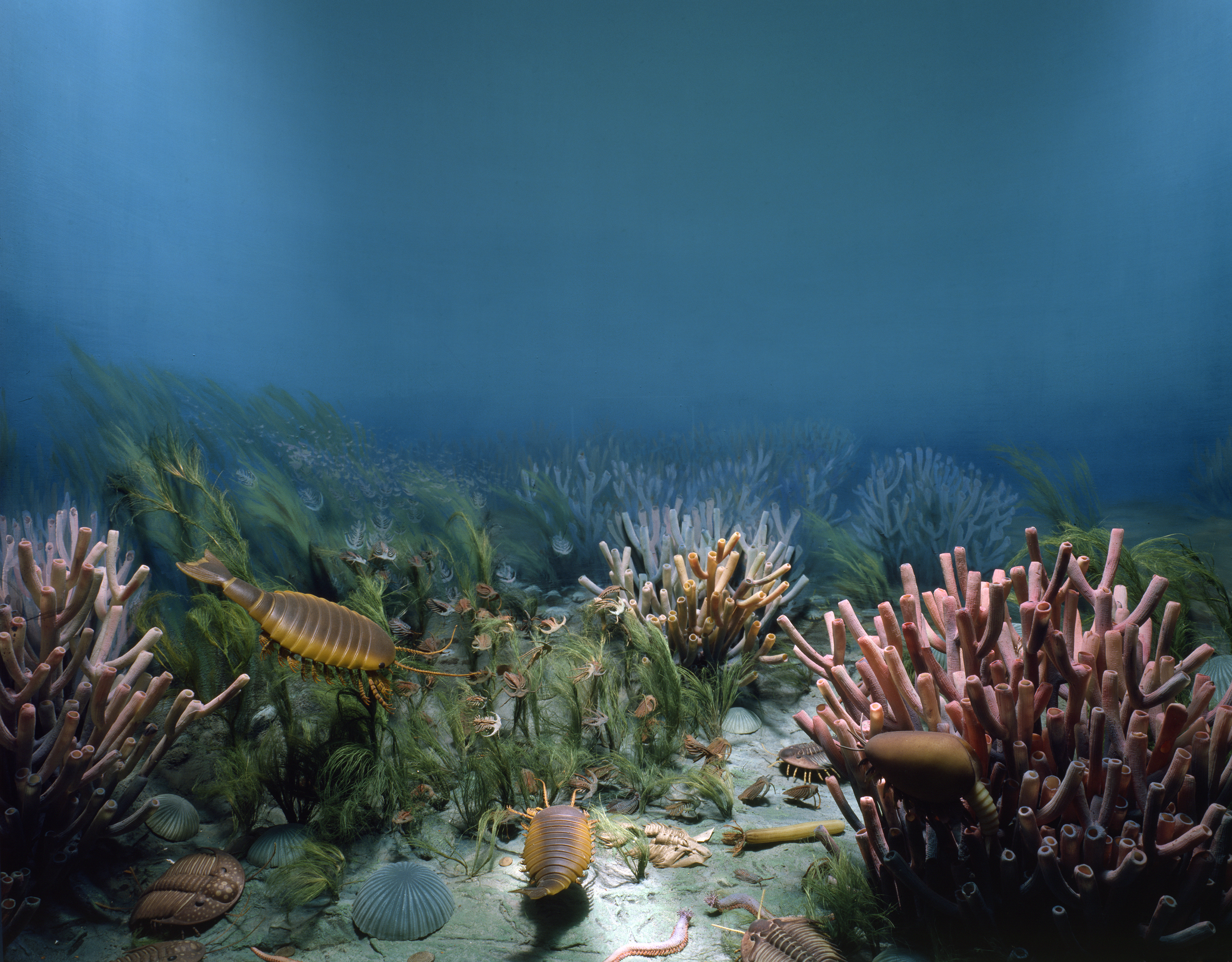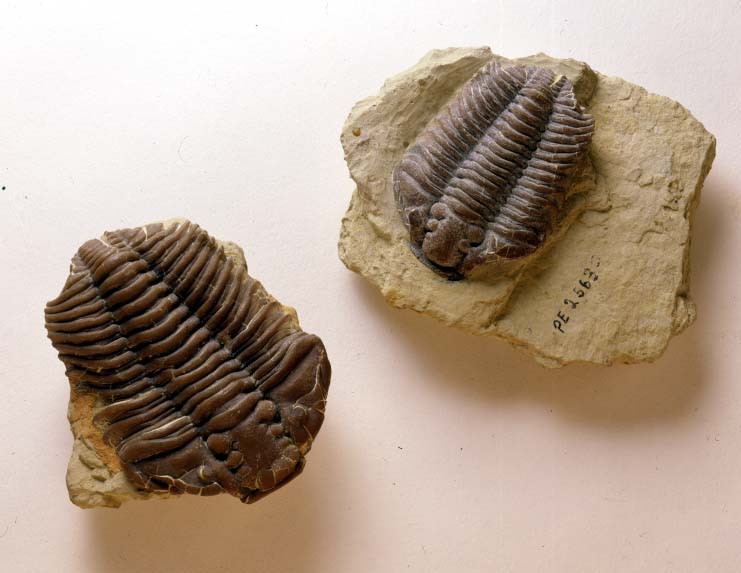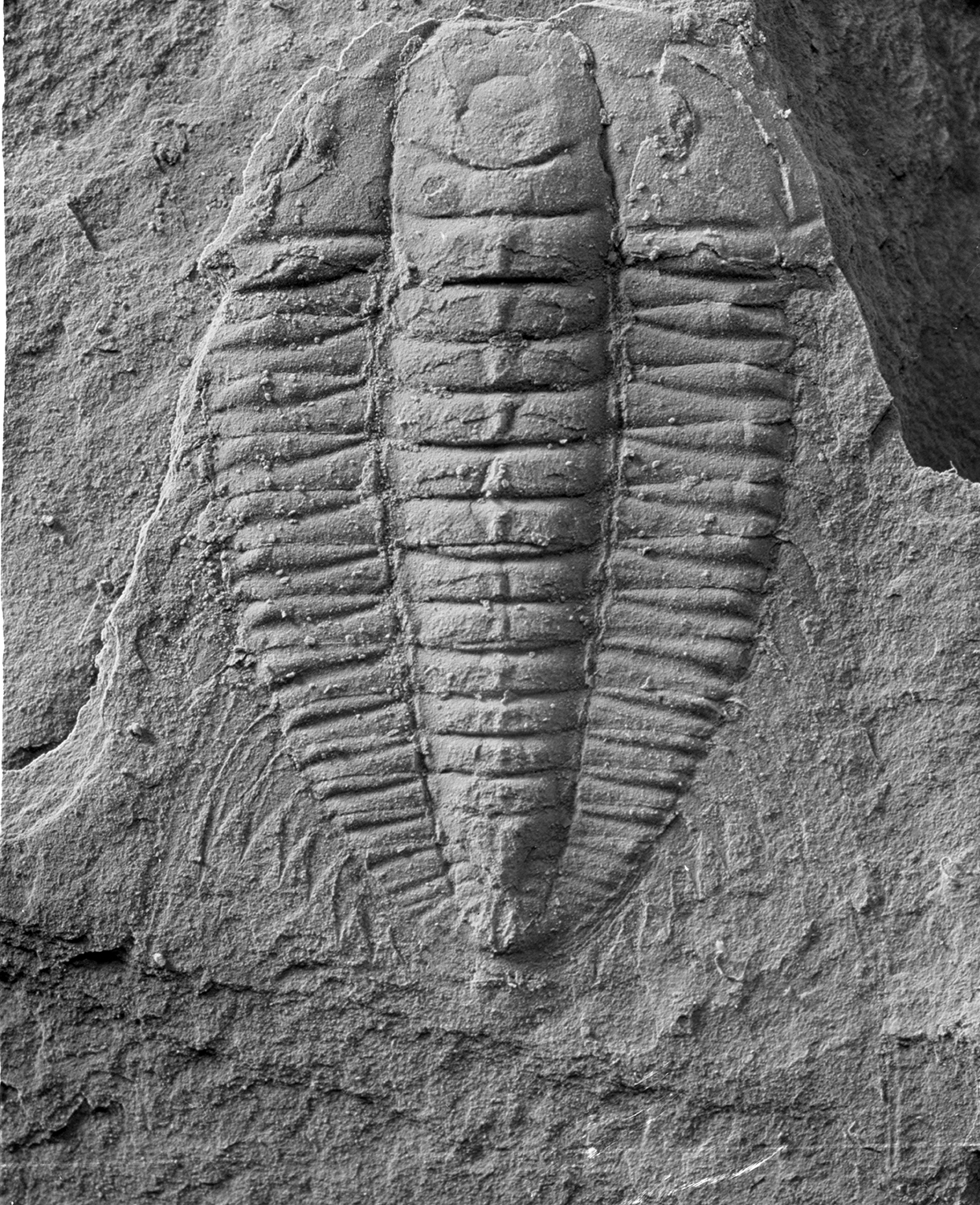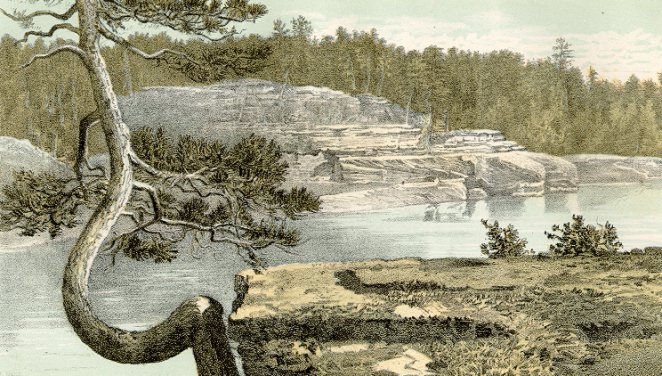Paleozoic
252 to 541 million years ago
During most of the Paleozoic shallow tropical seas covered Illinois and Wisconsin. These seas left behind thick layers of sedimentary rocks filled with the ancient life that lived in these seas.
Cambrian - 485 to 541 million years ago
About 520 million years ago, during the late part of the Cambrian Period, a shallow inland sea spread across much of Illinois and Wisconsin. Sandstone deposits, derived from erosion of land areas, covered much of this area. Cambrian fossils in these sandstones include many species of trilobites, brachiopods, and an early mollusk called hyoliths.
Ordovician - 444 to 485 million years ago
During the Ordovician Period, broad, shallow, tropical seas advanced and retreated at least three times over Illinois and Wisconsin. Each time the seas advanced they deposited a repeated sequence of rock: sandstone (beach environment), limestone (offshore environment), and shale (deeper water, low-energy environment). Many of the limestones and shales are very fossiliferous with abundant brachiopods and trilobites, plus sponges, bryozoans, molluscs, crinoids, receptaculitids and rare corals. Orthoconic nautiloid cephalopods over 17 feet long were the top predators in these seas.
Silurian - 419 to 444 million years ago
This is the only time that reefs grew in Illinois and Wisconsin. Located south of the equator and in the tropics, this area was covered by clear, shallow, tropical seas. During the Early Silurian, the fossil fauna was dominated by a low-diversity Virgiana pentamerid brachiopod community. By the mid-Silurian, stromatoporoids, an extinct type of calcareous sponge, and large tabulate corals formed the framework to create large, dome-shaped reefs that were 60 - 2000 meters long and 10-100 meters high. A diverse group of animals including receptaculitids, stromatoporoids, rugose and tabulate corals, brachiopods, bryozoans, molluscs, crinoids, cystoids, and trilobites, including Wisconsin’s state fossil Calymene celebra, lived in these reef environments. These reefs were the first reefs ever described in North America and their fossils can be seen today in Wisconsin and Illinois.
Devonian - 359 to 419 millions years ago
Devonian dolomite and shale, the youngest bedrock in Wisconsin, occur along the southeastern shoreline of Lake Michigan. These rocks were deposited during normal marine conditions and restricted conditions with some evaporate minerals present. Much of the rock is fossiliferous with spiriferid brachiopods, bryozoans, crinoids, cephalopods, bivalves, gastropods, trilobites, sharks, fish, and plant fossils. The rock was quarried and made into cement by the Milwaukee Cement Company between 1876-1907.
Mississippian - 323 to 359 Million years ago
Mississippian limestones in Illinois are generally pure carbonate with little shale or sand and often have caves systems in them. The fossil fauna is highlighted by abundant and diverse crinoids and brachiopods, plus corals, bryozoans, including Archimedes (corkscrew bryozoan), molluscs, sharks, and fish, but trilobites are rare.
Pennsylvanian - 299 to 323 million years ago
During the Pennsylvanian, Illinois was on the equator. There are no Pennsylvanian age rocks in Wisconsin. However, there is a rich fossil record in Illinois that documents a swampy tropical forest. Plants related to modern club-moss, horsetails, and ferns grew as tall as trees. Decaying vegetation, compressed by overlying deposits of sand and mud, was gradually converted into coal. The coal deposits of Illinois, the Appalachians, Britain and Germany originally formed in a continuous ban, which was dispersed when the continents were pushed apart by tectonic forces.
These forests were home to insects, including relatives to dragonflies, cockroaches, and grasshoppers. There were millipede-like creatures and 4-foot long, large crocodile-like amphibians prowled the wet forest floor. Lizards and smaller amphibians also inhabited the forest. Snails, bivalves, and crustaceans, similar to fairy shrimp, lived in the freshwater ponds and rivers.
In the near shore environment lived fish, sharks, bivalves, shrimps, including relatives to the mantis shrimps, sea cucumbers, a diverse group of marine polychaete worms, and The Illinois State Fossil, a very strange animal called the Tully monster. Offshore, to the west and south, the rocks are again limestone deposited in a similar tropical sea environment as during the Mississippian with abundant crinoids, productid brachiopods, and bryozoans. Trilobites are again rare.
Permian - 252 to 299 million years ago
There are no Permian rocks in Wisconsin and Illinois. This means we do not know what organisms lived here during that time.
